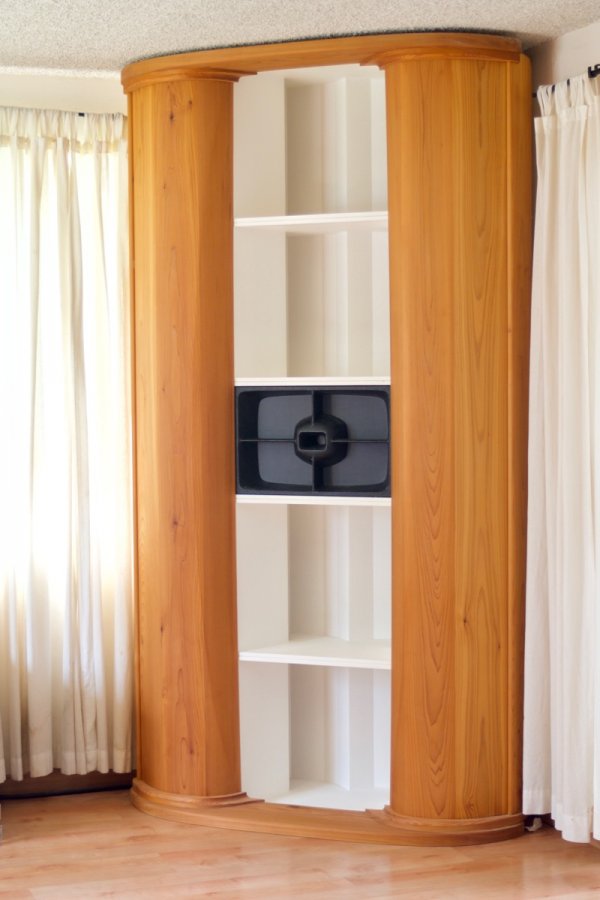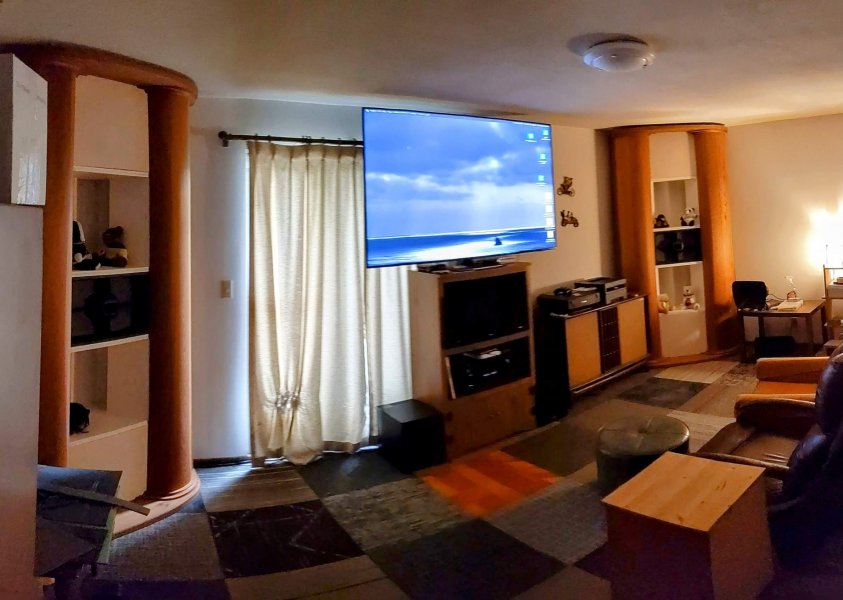What I'm doing lately is an experimental and highly unorthodox arrangement with a derived center channel. This uses 3 little cheap bookshelf speakers (for now) in the center using a matrix of L-R, L+R, R-L signal mixing to create a crosstalk canceling effect. This provides a suprisingly excellent and wide soundstage, with great purity of center panned images since they are entirely extracted from the two side channels and play exclusively from the center speaker. This array works down to around 600Hz. Below that the little speakers are too close together and the waves start to merge. So, from 600Hz on down the big horns take over. This provides a very wide spacing for lower frequencies, and narrower spacing with crosstalk reduction for higher frequencies. It's surprising just how good these little Sony speakers can sound when they're crossed over at 600 Hz in an array like this. I had read years ago that lower frequency drivers should be spaced apart further than higher frequency drivers for a more even stereo effect. The lower frequencies rely almost entirely on phase difference across the head to get a directional effect. In a standard listening triangle the high frequencies are too far apart, causing a comb filtering effect in each ear. The low frequencies are too close, not able to create much of a phase or volume difference across the head. This current setup creates a deep, clear and even soundstage across the room in front of me when sitting in the middle.
Our original plan for these speakers was to include a center channel, much like Klipsch had the Belle to go between the Klipschorns, which he recommended set widely spaced on the long wall of a room. I wasn't sure how to implement a center channel. I stumbled into this 3 closely spaced speaker array on accident. I thought that it might create somewhat of a stereo image, but would require the speakers to be exactly ear distance apart to work. To my surprise it works amazingly well up to three times that spacing when the listening position is far enough back. I think from some experiments and wave interference simulations that ideally the spacing should be about 1 foot above 1500 Hz, about 2 feet between 600 and 1500Hz, and then just go regular stereo spaced very widely below that. My tentative plan is to replace the bookshelves with constant directivity horns spaced about 1 foot center to center covering down to 1500 Hz, and then bigger horns on the floor below them spaced about 2 feet center to center. The lower crossover for those will depend on how they sound, but could be as low as 200 perhaps. In any case I feel I'll be sticking with this 3 speaker anti-crosstalk array from here on out. It's currently sounding good enough that I'm not in any particular hurry to improve it. The 3 speaker array is hiding in the cabinet below the TV! It's ridiculously good sounding for what it is. It's hard to believe that all the highs are coming out of those things. To my ears it's magic. Neither the old TV cabinet, the big flat screen TV above them, or the wall not far behind my head seem to be able to disturb the imaging. It's very robust. The speakers are all disappearing as well as I've ever heard. I think I'll replace the curtain the cat wrecked before I do anything else.
View attachment 115041








